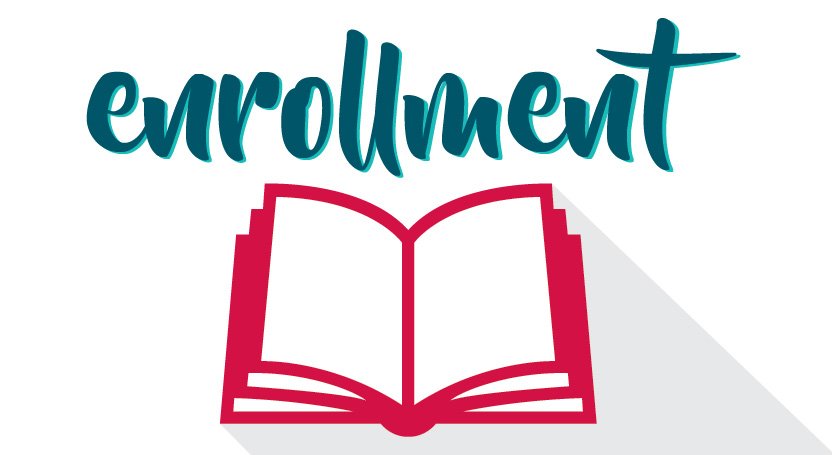Sentiment Analysis Using Python
To understand the specific issues and improve customer service, Duolingo employed sentiment analysis on their Play Store reviews. Some types of sentiment analysis overlap with other broad machine learning topics. Emotion detection, for instance, isn’t limited to natural language processing; it can also include computer vision, as well as audio and data processing from other Internet of Things (IoT) sensors. In this case study, consumer feedback, reviews, and ratings for e-commerce platforms can be analyzed using sentiment analysis. The sentiment analysis pipeline can be used to measure overall customer happiness, highlight areas for improvement, and detect positive and negative feelings expressed by customers. Sentiment analysis using NLP stands as a powerful tool in deciphering the complex landscape of human emotions embedded within textual data.
10 Best Python Libraries for Sentiment Analysis (2024) – Unite.AI
10 Best Python Libraries for Sentiment Analysis ( .
Posted: Tue, 16 Jan 2024 08:00:00 GMT [source]
On average, inter-annotator agreement (a measure of how well two (or more) human labelers can make the same annotation decision) is pretty low when it comes to sentiment analysis. And since machines learn from labeled data, sentiment analysis classifiers might not be as precise as other types of classifiers. Sentiment analysis is one of the hardest tasks in natural language processing because even humans struggle to analyze sentiments accurately. More recently, new feature extraction techniques have been applied based on word embeddings (also known as word vectors). This kind of representations makes it possible for words with similar meaning to have a similar representation, which can improve the performance of classifiers. There are different algorithms you can implement in sentiment analysis models, depending on how much data you need to analyze, and how accurate you need your model to be.
You can foun additiona information about ai customer service and artificial intelligence and NLP. Sentiment analysis is the process of classifying whether a block of text is positive, negative, or neutral. The goal that Sentiment mining tries to gain is to be analysed people’s opinions in a way that can help businesses expand. It focuses not only on polarity (positive, negative & neutral) but also on emotions (happy, sad, angry, etc.).
Subsequently, the precision of opinion investigation generally relies upon the intricacy of the errand and the framework’s capacity to gain from a lot of information. For those who want to learn about deep-learning based approaches for sentiment analysis, a relatively new and fast-growing research area, take a look at Deep-Learning Based Approaches for Sentiment Analysis. Get an understanding of customer feelings and opinions, beyond mere numbers and statistics. Understand how your brand image evolves over time, and compare it to that of your competition. You can tune into a specific point in time to follow product releases, marketing campaigns, IPO filings, etc., and compare them to past events. Brands of all shapes and sizes have meaningful interactions with customers, leads, even their competition, all across social media.
Aspect-based sentiment analysis is when you focus on opinions about a particular aspect of the services that your business offers. The general attitude is not useful here, so a different approach must be taken. For example, you produce smartphones and your new model has an improved lens. You would like to know how users are responding to the new lens, so need a fast, accurate way of analyzing comments about this feature. NLP uses computational methods to interpret and comprehend human language. It includes several operations, including sentiment analysis, named entity recognition, part-of-speech tagging, and tokenization.
Choosing the right Python sentiment analysis library is crucial for accurate and efficient analysis of textual data. For organizations, sentiment analysis can help them understand customer sentiments toward their products or services. This information can be used to improve customer experience, target marketing efforts, and make informed business decisions. Though we were able to obtain a decent accuracy score with the Bag of Words Vectorization method, it might fail to yield the same results when dealing with larger datasets.
Using LSTM-Based Models
In our United Airlines example, for instance, the flare-up started on the social media accounts of just a few passengers. Within hours, it was picked up by news sites and spread like wildfire across the US, then to China and Vietnam, as United was accused of racial profiling against a passenger of Chinese-Vietnamese descent. In China, the incident became the number one trending topic on Weibo, a microblogging site with almost 500 million users. These are all great jumping off points designed to visually demonstrate the value of sentiment analysis – but they only scratch the surface of its true power.
These challenges highlight the complexity of human language and communication. Overcoming them requires advanced NLP techniques, deep learning models, and a large amount of diverse and well-labelled training data. Despite these challenges, sentiment analysis continues to be a rapidly evolving field with vast potential. Python is a valuable tool for natural language processing and sentiment analysis. Using different libraries, developers can execute machine learning algorithms to analyze large amounts of text. Each library mentioned, including NLTK, TextBlob, VADER, SpaCy, BERT, Flair, PyTorch, and scikit-learn, has unique strengths and capabilities.
Sentiment analysis has moved beyond merely an interesting, high-tech whim, and will soon become an indispensable tool for all companies of the modern age. Ultimately, sentiment analysis enables us to glean new insights, better understand our customers, and empower our own teams more effectively so that they do better and more productive work. Another good way to go deeper with sentiment analysis is mastering your knowledge and skills in natural language processing (NLP), the computer science field that focuses on understanding ‘human’ language.
But it can pay off for companies that have very specific requirements that aren’t met by existing platforms. In those cases, companies typically brew their own tools starting with open source libraries. “Deep learning uses many-layered neural networks that are inspired by how the human brain works,” says IDC’s Sutherland. This more sophisticated level of sentiment analysis can look at entire sentences, even full conversations, to determine emotion, and can also be used to analyze voice and video. There are various types of NLP models, each with its approach and complexity, including rule-based, machine learning, deep learning, and language models. Transformer-based models are one of the most advanced Natural Language Processing Techniques.
The first step in a machine learning text classifier is to transform the text extraction or text vectorization, and the classical approach has been bag-of-words or bag-of-ngrams with their frequency. This graph expands on our Overall Sentiment data – it tracks the overall proportion of positive, neutral, and negative sentiment in the reviews from 2016 to 2021. Can you imagine manually sorting through thousands of tweets, customer support conversations, or surveys? Sentiment analysis helps businesses process huge amounts of unstructured data in an efficient and cost-effective way.
It is a data visualization technique used to depict text in such a way that, the more frequent words appear enlarged as compared to less frequent words. This gives us a little insight into, how the data looks after being processed through all the steps until now. But, for the sake of simplicity, we will merge these labels into two classes, i.e. As the data is in text format, separated by semicolons and without column names, we will create the data frame with read_csv() and parameters as “delimiter” and “names”. Suppose, there is a fast-food chain company and they sell a variety of different food items like burgers, pizza, sandwiches, milkshakes, etc. They have created a website to sell their food and now the customers can order any food item from their website and they can provide reviews as well, like whether they liked the food or hated it.
Now that we know what to consider when choosing Python sentiment analysis packages, let’s jump into the top Python packages and libraries for sentiment analysis. Companies can use this more nuanced version of sentiment analysis to detect whether people are getting frustrated or feeling uncomfortable. As we can see, a VaderSentiment object returns a dictionary of sentiment scores for the text to be analyzed. Multilingual consists of different languages where the classification needs to be done as positive, negative, and neutral. If you prefer to create your own model or to customize those provided by Hugging Face, PyTorch and Tensorflow are libraries commonly used for writing neural networks.
The approach is that counts the number of positive and negative words in the given dataset. If the number of positive words is greater than the number of negative words then the sentiment is positive else vice-versa. Emotion detection assigns independent emotional values, rather than discrete, numerical values. It leaves more room for interpretation, and accounts for more complex customer responses compared to a scale from negative to positive. User-generated information, such as posts, tweets, and comments, is abundant on social networking platforms.
Then, an object of the pipeline function is created and the task to be performed is passed as an argument (i.e sentiment analysis in our case). Here, since we have not mentioned the model to be used, the distillery-base-uncased-finetuned-sst-2-English mode is used by default for sentiment analysis. VADER (Valence Aware Dictionary and sEntiment Reasoner) is a rule-based sentiment analyzer that has been trained on social media text.
Java is another programming language with a strong community around data science with remarkable data science libraries for NLP. Sentiment analysis is a vast topic, and it can be intimidating to get started. Luckily, there are many useful resources, from helpful tutorials to all kinds of free online tools, to help you take your first steps. Sentiment analysis empowers all kinds of market research and competitive analysis. Whether you’re exploring a new market, anticipating future trends, or seeking an edge on the competition, sentiment analysis can make all the difference.
Sentiment analysis has multiple applications, including understanding customer opinions, analyzing public sentiment, identifying trends, assessing financial news, and analyzing feedback. A. Sentiment analysis is analyzing and classifying the sentiment expressed in text. It can be categorized into document-level and sentence-level sentiment analysis, where the former analyzes the sentiment of a whole document, and the latter focuses on the sentiment of individual sentences.
It focuses on a particular aspect for instance if a person wants to check the feature of the cell phone then it checks the aspect such as the battery, screen, and camera quality then aspect based is used. Sentiment analysis in NLP can be implemented to achieve varying results, depending on whether you opt for classical approaches or more complex end-to-end solutions. We will evaluate our model using various metrics such as Accuracy Score, Precision Score, Recall Score, Confusion Matrix and create a roc curve to visualize how our model performed.
And the roc curve and confusion matrix are great as well which means that our model is able to classify the labels accurately, with fewer chances of error. If you want to get started with these out-of-the-box tools, check out this guide to the best SaaS tools for sentiment analysis, which also come with APIs for seamless integration with your nlp for sentiment analysis existing tools. Uncover trends just as they emerge, or follow long-term market leanings through analysis of formal market reports and business journals. Analyze customer support interactions to ensure your employees are following appropriate protocol. Decrease churn rates; after all it’s less hassle to keep customers than acquire new ones.
Bing Liu is a thought leader in the field of machine learning and has written a book about sentiment analysis and opinion mining. Sentiment analysis is used in social media monitoring, allowing businesses to gain insights about how customers feel about certain topics, and detect urgent issues in real time before they spiral out of control. Namely, the positive sentiment sections of negative reviews and the negative section of positive ones, and the reviews (why do they feel the way they do, how could we improve their scores?). But with sentiment analysis tools, Chewy could plug in their 5,639 (at the time) TrustPilot reviews to gain instant sentiment analysis insights. So, to help you understand how sentiment analysis could benefit your business, let’s take a look at some examples of texts that you could analyze using sentiment analysis. By using a centralized sentiment analysis system, companies can apply the same criteria to all of their data, helping them improve accuracy and gain better insights.
It uses various Natural Language Processing algorithms such as Rule-based, Automatic, and Hybrid. Data collection, preprocessing, feature extraction, model training, and evaluation are all steps in the pipeline development process for sentiment analysis. It entails gathering data from multiple sources, cleaning and preparing it, choosing pertinent features, training and optimizing the sentiment analysis model, and assessing its performance using relevant metrics. Useful for those starting research on sentiment analysis, Liu does a wonderful job of explaining sentiment analysis in a way that is highly technical, yet understandable. Sentiment analysis can be used on any kind of survey – quantitative and qualitative – and on customer support interactions, to understand the emotions and opinions of your customers.
Information extraction, entity linking, and knowledge graph development depend heavily on NER. Word embeddings capture the semantic and contextual links between words and numerical representations of words. Word meanings are encoded via embeddings, allowing computers to recognize word relationships. Now, we will read the test data and perform the same transformations we did on training data and finally evaluate the model on its predictions.
How does Sentiment Analysis work?
All predicates (adjectives, verbs, and some nouns) should not be treated the same with respect to how they create sentiment. In the prediction process (b), the feature extractor is used to transform unseen text inputs into feature vectors. These feature vectors are then fed into the model, which generates predicted tags (again, positive, negative, or neutral). Then, we’ll jump into a real-world example of how Chewy, a pet supplies company, was able to gain a much more nuanced (and useful!) understanding of their reviews through the application of sentiment analysis. One of the downsides of using lexicons is that people express emotions in different ways. Some words that typically express anger, like bad or kill (e.g. your product is so bad or your customer support is killing me) might also express happiness (e.g. this is bad ass or you are killing it).
For linguistic analysis, they use rule-based techniques, and to increase accuracy and adapt to new information, they employ machine learning algorithms. These strategies incorporate domain-specific knowledge and the capacity to learn from data, providing a more flexible and adaptable solution. Various sentiment analysis methods have been developed to overcome these problems. Rule-based techniques use established linguistic rules and patterns to identify sentiment indicators and award sentiment scores.
It seeks to understand the relationships between words, phrases, and concepts in a given piece of content. Semantic analysis considers the underlying meaning, intent, and the way different elements in a sentence relate to each other. This is crucial for tasks such as question answering, language translation, and content summarization, where a deeper understanding of context and semantics is required. By analyzing Play Store reviews’ sentiment, Duolingo identified and addressed customer concerns effectively.
Natural Language Processing & Sentiment Analysis
Tracking customer sentiment over time adds depth to help understand why NPS scores or sentiment toward individual aspects of your business may have changed. NLTK (Natural Language Toolkit) is a Python library for natural language processing that includes several tools for sentiment analysis, including classifiers and sentiment lexicons. NLTK is a well-established and widely used library for natural language processing, and its sentiment analysis tools are particularly powerful when combined with other NLTK tools. Duolingo, a popular language learning app, received a significant number of negative reviews on the Play Store citing app crashes and difficulty completing lessons.
This data visualization sample is classic temporal datavis, a datavis type that tracks results and plots them over a period of time. “But people seem to give their unfiltered opinion on Twitter and other places,” he says. The very largest companies may be able to collect their own given enough time. Building their own platforms can give companies an edge over the competition, says Dan Simion, vice president of AI and analytics at Capgemini. The group analyzes more than 50 million English-language tweets every single day, about a tenth of Twitter’s total traffic, to calculate a daily happiness store. Here’s an example of our corpus transformed using the tf-idf preprocessor[3].
They continue to improve in their ability to understand context, nuances, and subtleties in human language, making them invaluable across numerous industries and applications. In conclusion, sentiment analysis is a crucial tool in deciphering the mood and opinions expressed in textual data, providing valuable insights for businesses and individuals alike. By classifying text as positive, negative, or neutral, sentiment analysis aids in understanding customer sentiments, improving brand reputation, and making informed business decisions.
We plan to create a data frame consisting of three test cases, one for each sentiment we aim to classify and one that is neutral. Then, we’ll cast a prediction and compare the results to determine the accuracy of our model. Yes, sentiment analysis is a subset of AI that analyzes text to determine emotional tone (positive, negative, neutral). Semantic analysis, on the other hand, goes beyond sentiment and aims to comprehend the meaning and context of the text.
One of the simplest and oldest approaches to sentiment analysis is to use a set of predefined rules and lexicons to assign polarity scores to words or phrases. For example, a rule-based model might assign a positive score to words like “love”, “happy”, or “amazing”, and a negative score to words like “hate”, “sad”, or “terrible”. Then, the model would aggregate the scores of the words in a text to determine its overall sentiment. Rule-based models are easy to implement and interpret, but they have some major drawbacks. They are not able to capture the context, sarcasm, or nuances of language, and they require a lot of manual effort to create and maintain the rules and lexicons.
Once you’re familiar with the basics, get started with easy-to-use sentiment analysis tools that are ready to use right off the bat. Learn more about how sentiment analysis works, its challenges, and how you can use sentiment analysis to improve processes, decision-making, customer satisfaction and more. Discover the top Python sentiment analysis libraries for accurate and efficient text analysis. The biggest use case of sentiment analysis in industry today is in call centers, analyzing customer communications and call transcripts.
The second review is negative, and hence the company needs to look into their burger department. The first review is definitely a positive one and it signifies that the customer was really happy with the sandwich. Another key advantage of SaaS tools is that you don’t even need to know how to code; they provide integrations with third-party apps, like MonkeyLearn’s Zendesk, Excel and Zapier Integrations. Sentiment analysis allows you to automatically monitor all chatter around your brand and detect and address this type of potentially-explosive scenario while you still have time to defuse it. Here’s a quite comprehensive list of emojis and their unicode characters that may come in handy when preprocessing.
It involves the creation of algorithms and methods that let computers meaningfully comprehend, decipher, and produce human language. Machine translation, sentiment analysis, information extraction, and question-answering systems are just a few of the many applications of NLP. Rule-based and machine-learning techniques are combined in hybrid approaches.
Sentiment analysis is the process of determining the emotional tone behind a text. There are considerable Python libraries available for sentiment analysis, but in this article, we will discuss the top Python sentiment analysis libraries. These libraries can help you extract insights from social media, customer feedback, and other forms of text data.
In this article, we will focus on the sentiment analysis using NLP of text data. Discover how we analyzed the sentiment of thousands of Facebook reviews, and transformed them into actionable insights. Real-time analysis allows you to see shifts in VoC right away and understand the nuances of the customer experience over time beyond statistics and percentages. Most marketing departments are already tuned into online mentions as far as volume – they measure more chatter as more brand awareness. Usually, a rule-based system uses a set of human-crafted rules to help identify subjectivity, polarity, or the subject of an opinion.
Sentiment analysis focuses on determining the emotional tone expressed in a piece of text. Its primary goal is to classify the sentiment as positive, negative, or neutral, especially valuable in understanding customer opinions, reviews, and social media comments. Sentiment analysis algorithms analyse the language used to identify the prevailing sentiment and gauge public or individual reactions to products, services, or events. In contrast to classical methods, sentiment analysis with transformers means you don’t have to use manually defined features – as with all deep learning models. You just need to tokenize the text data and process with the transformer model.
Or identify positive comments and respond directly, to use them to your benefit. Imagine the responses above come from answers to the question What did you like about the event? The first response would be positive and the second one would be negative, right? Now, imagine the responses come from answers to the question What did you DISlike about the event? The negative in the question will make sentiment analysis change altogether.
Yes, we can show the predicted probability from our model to determine if the prediction was more positive or negative. For this project, we will use the logistic regression algorithm to discriminate between positive and negative reviews. Logistic regression is a statistical method used for binary classification, which means it’s designed to predict the probability of a categorical outcome with two possible values. To perform any task using transformers, we first need to import the pipeline function from transformers.
We first need to generate predictions using our trained model on the ‘X_test’ data frame to evaluate our model’s ability to predict sentiment on our test dataset. After this, we will create a classification report and review the results. The classification report shows that our model has an 84% accuracy rate and performs equally well on both positive and negative sentiments. To build a sentiment analysis in python model using the BOW Vectorization Approach we need a labeled dataset. As stated earlier, the dataset used for this demonstration has been obtained from Kaggle. After, we trained a Multinomial Naive Bayes classifier, for which an accuracy score of 0.84 was obtained.
Keep in mind, the objective of sentiment analysis using NLP isn’t simply to grasp opinion however to utilize that comprehension to accomplish explicit targets. It’s a useful asset, yet like any device, its worth comes from how it’s utilized. We can even break these principal sentiments(positive and negative) into smaller sub sentiments such as “Happy”, “Love”, ”Surprise”, “Sad”, “Fear”, “Angry” etc. as per the needs or business requirement.
This is exactly the kind of PR catastrophe you can avoid with sentiment analysis. It’s an example of why it’s important to care, not only about if people are talking about your brand, but how they’re talking about it. If you are new to sentiment analysis, then you’ll quickly notice improvements. For typical use cases, such as ticket routing, brand monitoring, and VoC analysis, you’ll save a lot of time and money on tedious manual tasks. A good deal of preprocessing or postprocessing will be needed if we are to take into account at least part of the context in which texts were produced. However, how to preprocess or postprocess data in order to capture the bits of context that will help analyze sentiment is not straightforward.
The goal of sentiment analysis is to classify the text based on the mood or mentality expressed in the text, which can be positive negative, or neutral. Sentiment analysis is easy to implement using python, because there are a variety of methods available that are suitable for this task. It remains an interesting and valuable way of analyzing textual data for businesses of all kinds, and provides https://chat.openai.com/ a good foundational gateway for developers getting started with natural language processing. Its value for businesses reflects the importance of emotion across all industries – customers are driven by feelings and respond best to businesses who understand them. Customer feedback is vital for businesses because it offers clear insights into client experiences, preferences, and pain points.
These models capture the dependencies between words and sentences, which learn hierarchical representations of text. They are exceptional in identifying intricate sentiment patterns and context-specific sentiments. It includes tools for natural language processing and has an easygoing platform for building and fine-tuning models for sentiment analysis. For this reason, PyTorch is a favored choice for researchers and developers who want to experiment with new deep learning architectures.
And then, we can view all the models and their respective parameters, mean test score and rank as GridSearchCV stores all the results in the cv_results_ attribute. Stopwords are commonly used words in a sentence such as “the”, “an”, “to” etc. which do not add much value. Now, let’s get our hands dirty by implementing Sentiment Analysis using NLP, which will predict the sentiment of a given statement. As we humans communicate with each other in a way that we call Natural Language which is easy for us to interpret but it’s much more complicated and messy if we really look into it.
That means that a company with a small set of domain-specific training data can start out with a commercial tool and adapt it for its own needs. Here are the probabilities projected on a horizontal bar chart for each of our test cases. Notice that the positive and negative test cases have a high or low probability, respectively. The neutral test case is in the middle of the probability distribution, so we can use the probabilities to define a tolerance interval to classify neutral sentiments.
By monitoring these conversations you can understand customer sentiment in real time and over time, so you can detect disgruntled customers immediately and respond as soon as possible. Still, sentiment analysis is worth the effort, even if your sentiment analysis predictions are wrong from time to time. By using MonkeyLearn’s sentiment analysis model, you can expect correct predictions about 70-80% of the time you submit your texts for classification. The second and third texts are a little more difficult to classify, though.
- Sentiment analysis can also be used in social media monitoring, political analysis, and market research.
- This is because MonkeyLearn’s sentiment analysis AI performs advanced sentiment analysis, parsing through each review sentence by sentence, word by word.
- The first step in a machine learning text classifier is to transform the text extraction or text vectorization, and the classical approach has been bag-of-words or bag-of-ngrams with their frequency.
- It focuses on a particular aspect for instance if a person wants to check the feature of the cell phone then it checks the aspect such as the battery, screen, and camera quality then aspect based is used.
NLP methods are employed in sentiment analysis to preprocess text input, extract pertinent features, and create predictive models to categorize sentiments. These methods include text cleaning and normalization, stopword removal, negation handling, and text representation utilizing numerical features like word embeddings, TF-IDF, or bag-of-words. Using machine learning algorithms, deep learning models, or hybrid strategies to categorize sentiments and offer insights into customer sentiment and preferences is also made possible by NLP. The goal of sentiment analysis, called opinion mining, is to identify and comprehend the sentiment or emotional tone portrayed in text data. The primary goal of sentiment analysis is to categorize text as good, harmful, or neutral, enabling businesses to learn more about consumer attitudes, societal sentiment, and brand reputation. First, since sentiment is frequently context-dependent and might alter across various cultures and demographics, it can be challenging to interpret human emotions and subjective language.
Maybe you want to track brand sentiment so you can detect disgruntled customers immediately and respond as soon as possible. Maybe you want to compare sentiment from one quarter to the next to see if you need to take action. Then you could dig deeper into your qualitative data to see why sentiment is falling or rising.
Choosing the right Python sentiment analysis library can provide numerous benefits and help organizations gain valuable insights into customer opinions and sentiments. Let’s take a look at things to consider when choosing a Python sentiment analysis library. NLP libraries capable of performing sentiment analysis include HuggingFace, SpaCy, Flair, and AllenNLP. In addition, some low-code machine language tools also support sentiment analysis, including PyCaret and Fast.AI. All the big cloud players offer sentiment analysis tools, as do the major customer support platforms and marketing vendors. Conversational AI vendors also include sentiment analysis features, Sutherland says.
Sentiment analysis in multilingual context: Comparative analysis of machine learning and hybrid deep learning models – sciencedirect.com
Sentiment analysis in multilingual context: Comparative analysis of machine learning and hybrid deep learning models.
Posted: Tue, 19 Sep 2023 19:40:03 GMT [source]
This resulted in a significant decrease in negative reviews and an increase in average star ratings. Additionally, Duolingo’s proactive approach to customer service improved brand image and user satisfaction. It involves using artificial neural networks, which are inspired by the structure of the human brain, to classify text into positive, negative, or neutral sentiments. It has Recurrent neural networks, Long short-term memory, Gated recurrent unit, etc to process sequential data like text. Over here, the lexicon method, tokenization, and parsing come in the rule-based.
The analysis revealed an overall positive sentiment towards the product, with 70% of mentions being positive, 20% neutral, and 10% negative. Positive comments praised the product’s natural ingredients, effectiveness, and skin-friendly Chat PG properties. Negative comments expressed dissatisfaction with the price, packaging, or fragrance. The potential applications of sentiment analysis are vast and continue to grow with advancements in AI and machine learning technologies.
Now, we will convert the text data into vectors, by fitting and transforming the corpus that we have created. Scikit-Learn provides a neat way of performing the bag of words technique using CountVectorizer. But first, we will create an object of WordNetLemmatizer and then we will perform the transformation.
Negative comments expressed dissatisfaction with the price, fit, or availability. The sentiments happy, sad, angry, upset, jolly, pleasant, and so on come under emotion detection. This approach restricts you to manually defined words, and it is unlikely that every possible word for each sentiment will be thought of and added to the dictionary. Instead of calculating only words selected by domain experts, we can calculate the occurrences of every word that we have in our language (or every word that occurs at least once in all of our data). This will cause our vectors to be much longer, but we can be sure that we will not miss any word that is important for prediction of sentiment. Named Entity Recognition (NER) is the process of finding and categorizing named entities in text, such as names of individuals, groups, places, and dates.…




















